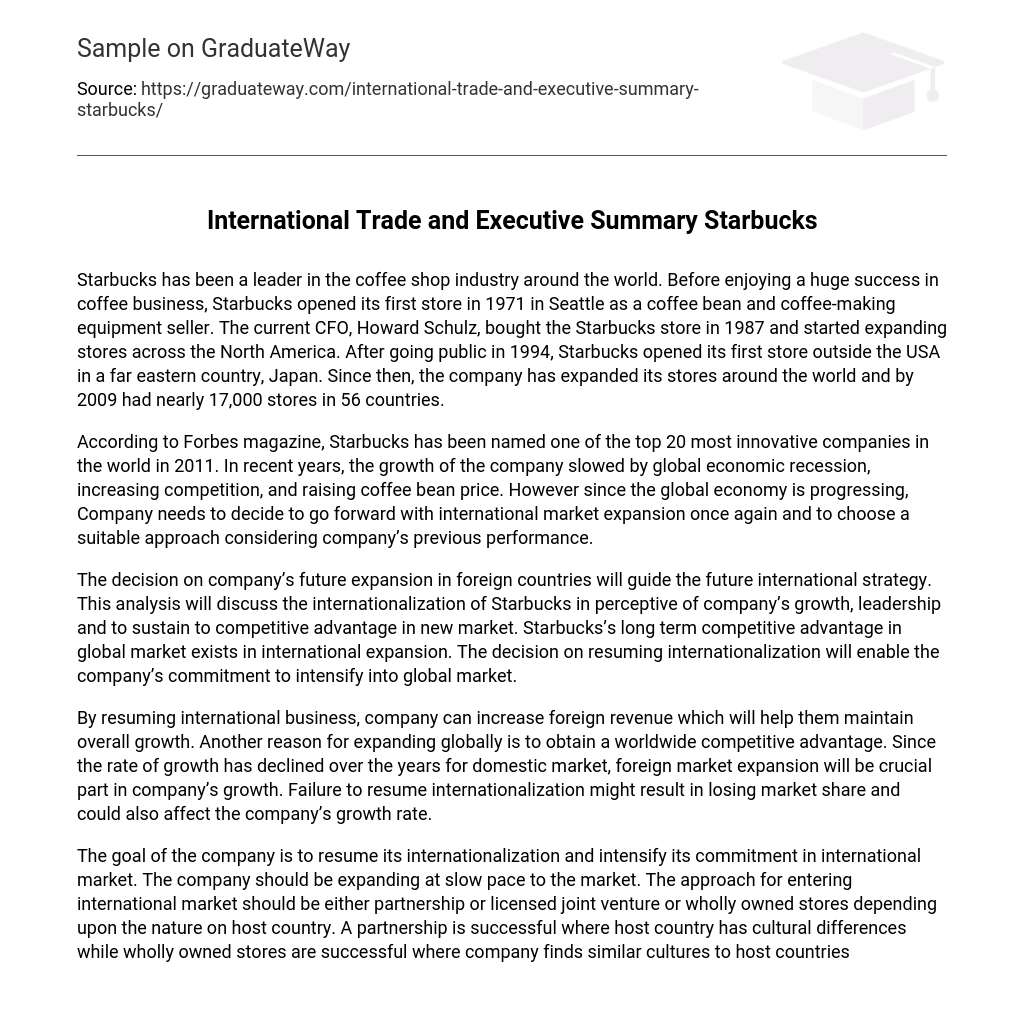Starbucks has been a leader in the coffee shop industry around the world. Before enjoying a huge success in coffee business, Starbucks opened its first store in 1971 in Seattle as a coffee bean and coffee-making equipment seller. The current CFO, Howard Schulz, bought the Starbucks store in 1987 and started expanding stores across the North America. After going public in 1994, Starbucks opened its first store outside the USA in a far eastern country, Japan. Since then, the company has expanded its stores around the world and by 2009 had nearly 17,000 stores in 56 countries.
According to Forbes magazine, Starbucks has been named one of the top 20 most innovative companies in the world in 2011. In recent years, the growth of the company slowed by global economic recession, increasing competition, and raising coffee bean price. However since the global economy is progressing, Company needs to decide to go forward with international market expansion once again and to choose a suitable approach considering company’s previous performance.
The decision on company’s future expansion in foreign countries will guide the future international strategy. This analysis will discuss the internationalization of Starbucks in perceptive of company’s growth, leadership and to sustain to competitive advantage in new market. Starbucks’s long term competitive advantage in global market exists in international expansion. The decision on resuming internationalization will enable the company’s commitment to intensify into global market.
By resuming international business, company can increase foreign revenue which will help them maintain overall growth. Another reason for expanding globally is to obtain a worldwide competitive advantage. Since the rate of growth has declined over the years for domestic market, foreign market expansion will be crucial part in company’s growth. Failure to resume internationalization might result in losing market share and could also affect the company’s growth rate.
The goal of the company is to resume its internationalization and intensify its commitment in international market. The company should be expanding at slow pace to the market. The approach for entering international market should be either partnership or licensed joint venture or wholly owned stores depending upon the nature on host country. A partnership is successful where host country has cultural differences while wholly owned stores are successful where company finds similar cultures to host countries





